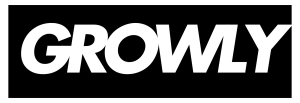As more companies embrace flexible working arrangements, the remote work model has gained substantial traction. Technology has been a key enabler in making work-from-home more efficient, allowing businesses to maintain productivity, enhance communication, and streamline workflows. In this blog post, we’ll explore the various technological tools and strategies that are revolutionizing the remote work experience, transforming it from a temporary solution to a long-term, sustainable model.
Enhancing Communication with Digital Tools
Effective communication is the cornerstone of any successful remote work environment. With the right technology, teams can collaborate seamlessly, regardless of their physical location. Here are some top communication tools that foster better collaboration:
- Slack – A real-time messaging platform that allows teams to create channels for specific projects, reducing email clutter.
- Zoom – A video conferencing tool that facilitates face-to-face interaction, ideal for meetings and presentations.
- Microsoft Teams – A collaboration hub that integrates with Microsoft 365, offering chat, file sharing, and video calls.
Project Management Tools for Efficiency
Keeping tasks organized is crucial for remote teams. Project management tools offer structured ways to allocate resources, track progress, and meet deadlines. Some popular choices include:
- Trello – A visual tool that uses boards and cards to help teams manage tasks and workflows.
- Asana – Allows teams to create project timelines, assign tasks, and monitor progress through a user-friendly interface.
- ClickUp – Combines tasks, docs, goals, and chat in one platform, ensuring that all aspects of project management are covered.
Time Management: The Key to Productivity
One of the challenges of working from home is managing time effectively. Fortunately, there are several tools designed to help individuals maximize productivity:
- Todoist – A task management app that helps users prioritize their to-do lists based on deadlines and importance.
- RescueTime – Tracks daily computer activity, providing insights to help users understand their productivity patterns.
- Forest – A unique time management app that encourages users to stay focused by growing virtual trees.
The Role of Automation in Efficiency
Automation streamlines processes and eliminates redundant tasks, allowing remote workers to focus on more important aspects of their jobs. Here are some ways automation can enhance efficiency:
- Zapier – Connects different apps and automates workflows, enabling tasks to be completed without manual intervention.
- IFTTT – Allows users to create “if this, then that” rules to automate actions among various apps.
- HubSpot – Offers a suite of marketing and sales tools that can automate email campaigns and lead tracking.
Creating a Productive Workspace
In addition to digital tools, technology helps cultivate a conducive workspace at home. Here are ways to set up your remote office efficiently:
- Invest in ergonomic furniture that promotes a healthy posture.
- Utilize noise-canceling headphones to minimize distractions in a bustling home environment.
- Ensure reliable internet connectivity to avoid disruptions during online meetings.
Cybersecurity in Remote Work
With the rise of remote work, cybersecurity has become a priority. Companies are leveraging technology to protect sensitive data through:
- LastPass – A password manager that secures login credentials and provides safe sharing options.
- Cloudflare – Security services that protect against DDoS attacks and ensure clients’ online safety.
- VPNs (Virtual Private Networks) – Encrypted connections that safeguard data during remote access to secure networks.
Conclusion
As technology continues to evolve, it opens up new possibilities for making work-from-home incredibly efficient. By leveraging communication tools, project management systems, automation, and best practices for cybersecurity and workspace setup, companies can foster a productive environment that supports both employees and business objectives. In a world that increasingly prioritizes flexibility, embracing these technological advancements can mean the difference between thriving and merely surviving in the remote work landscape.








